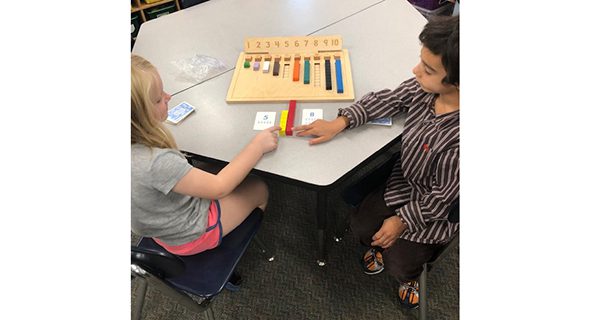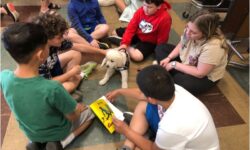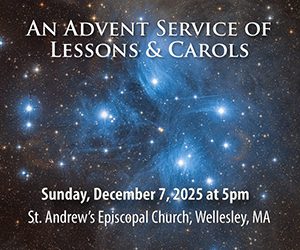Math can be hard at any age, but for Kindergarten and first grade students, it’s easy to feel overwhelmed learning new mathematical concepts for the first time. For many, this is their first foray into abstract thinking. Tools that can transform those lofty concepts into concrete processes can make all the difference. That’s exactly what Stern Math does, and that’s why the Westwood Public Schools incorporate it into the math curriculum in all its elementary schools.
“Stern Math is one of my favorite things to talk about,” said Westwood Elementary Math Coordinator Christine Size, “because I’ve seen the game-changing effect it has on students and teachers.”
Also known as Structural Arithmetic, Stern Math is a hands-on, manipulative-based approach based on reasoning and insight into mathematical relationships. It’s not rote learning and memorization. Students see the math as they work with colorful wooden blocks that fit into trays with corresponding values, making math accessible for all students. It is particularly helpful for students with language-based learning difficulties, because it takes language out of the equation.
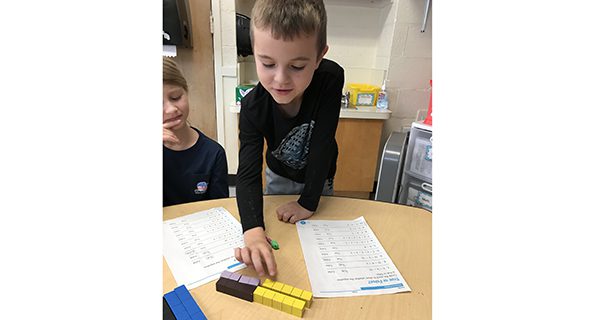 Size first saw Sterns Blocks and kits in use by Westwood special educators about 10 years ago. Then a math specialist, she and her fellow specialists began using the materials for intervention work with students. Size immediately saw results and became the district’s Stern Math crusader.
Size first saw Sterns Blocks and kits in use by Westwood special educators about 10 years ago. Then a math specialist, she and her fellow specialists began using the materials for intervention work with students. Size immediately saw results and became the district’s Stern Math crusader.
“I’m so appreciative for the way the district has supported my campaign to get the materials in classrooms,” Size said. “Everyone from the school principals to Superintendent Emily Parks heard how important and effective we teachers believe the kits are, and they acted on it.”
In 2015, Size led a professional development course on Stern Math. Those teachers who elected to attend received base kits, a surprise bonus. Kris McDonough, a Kindergarten teacher at the Martha Jones School, was among them.
“The Sterns blocks are incredibly powerful,” McDonough said. “They help my students understand that numbers are more than symbols and shapes, that there is meaning attached. With that, they can build math fluency – accurately, flexibly, and efficiently performing math operations.”
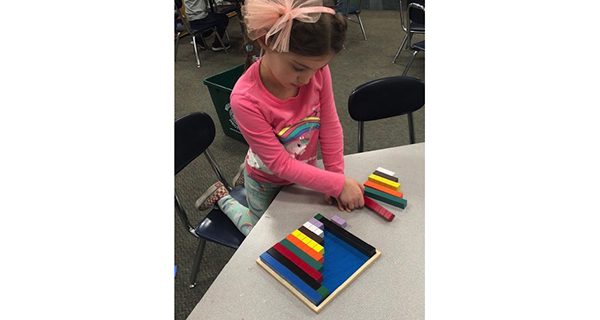 One of McDonough’s favorite memories of the Sterns blocks involved a math game called “Compare.” Students play the game in pairs, each with a stack of numbered cards face down. Simultaneously, each student flips over the top card on their stack and, together, they compare the values to determine which is more.
One of McDonough’s favorite memories of the Sterns blocks involved a math game called “Compare.” Students play the game in pairs, each with a stack of numbered cards face down. Simultaneously, each student flips over the top card on their stack and, together, they compare the values to determine which is more.
When two boys struggled with that task, they grabbed a nearby set of blocks and used them to visualize the value comparisons. Then they took the game even further to determine not only which was more, but how much more. That perfectly illustrates how the materials empower children to problem-solve and build concept upon concept.
“My students now talk about math so much better, explaining their answers and thinking,” McDonough said. “Their math talk is so rich, that they learn concepts and strategies from each other. That never happened with rote memorization.”
Downey School first grade teacher Kristen Carr also attended Size’s 2015 professional development course.
“The built-in structure of the Sterns blocks and trays – with a certain color for a certain number – helps students think beyond mere counting,” Carr said. “In grade one, the materials help us concretely explore concepts like part-whole, how many of each, and doubles. We also start using the 10-block much more to model what happens, for instance, when you keep increasing a value by 10.”
Comparison problems are part of first grade math, too. For example, if a person has 10 marbles, but loses three, how many do they have left? Carr said that because the students are used to working with the Sterns blocks, they visualize such problems and picture the answer.
It’s clear the applications are endless, and the learning is exponential.




